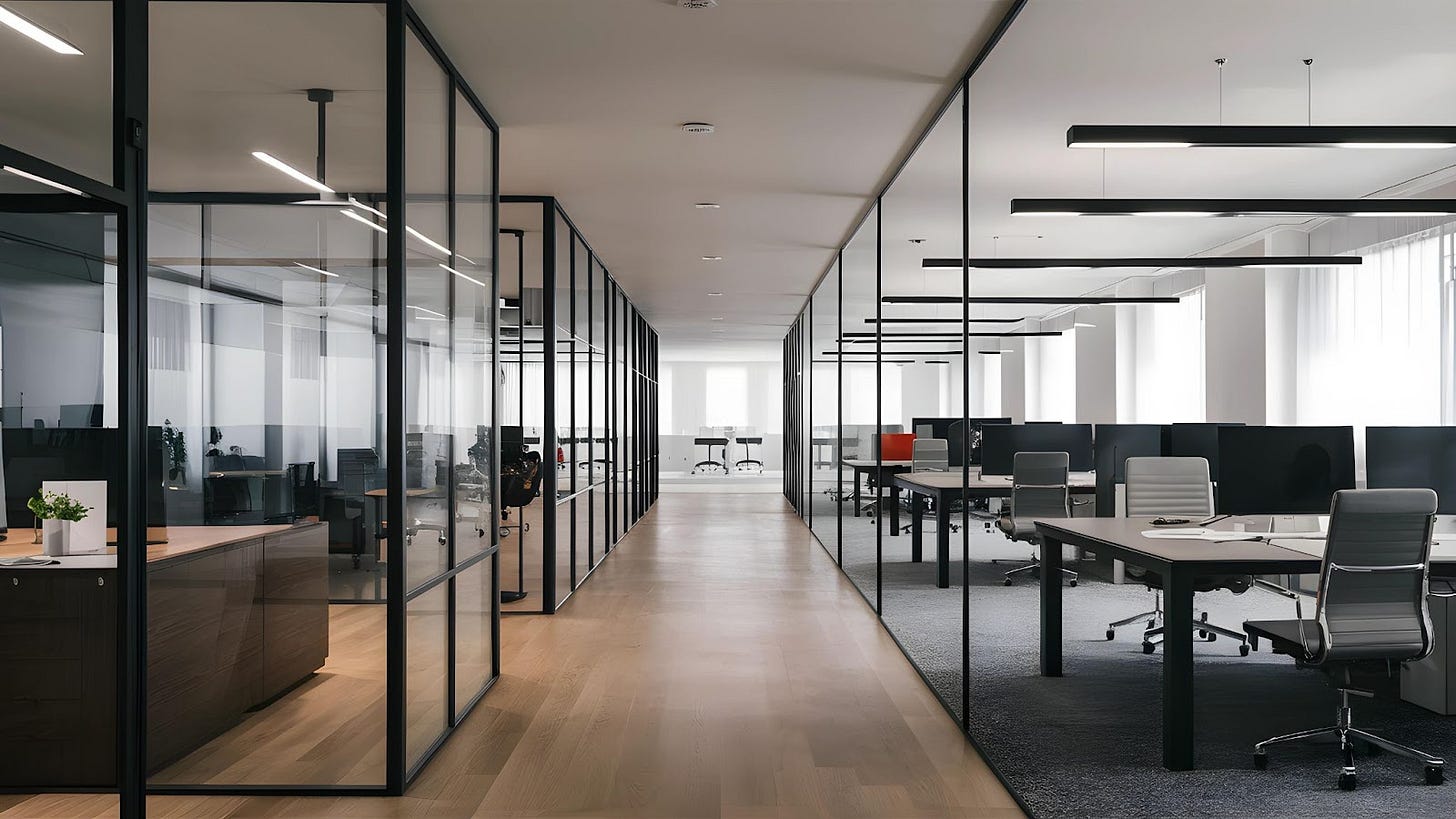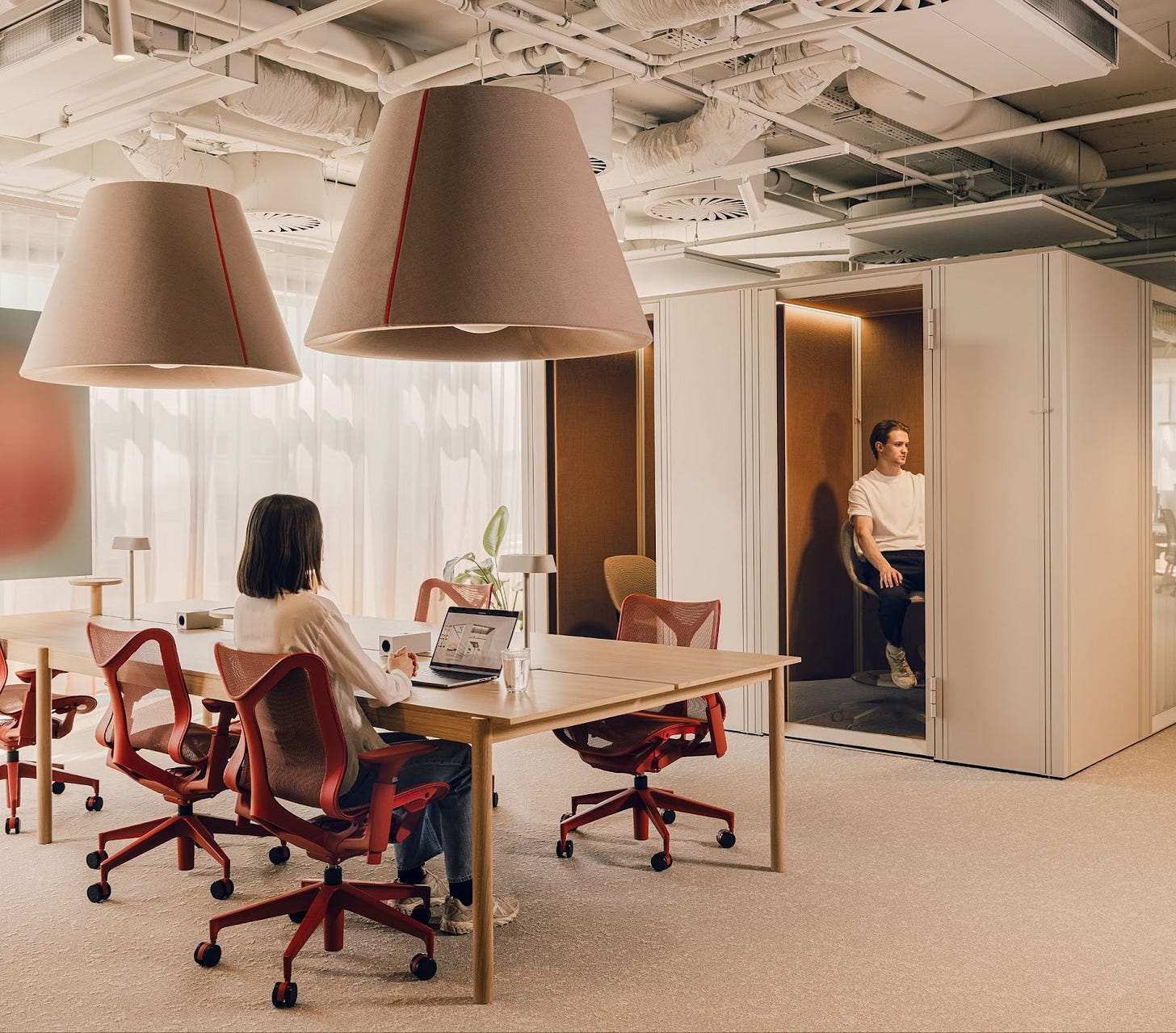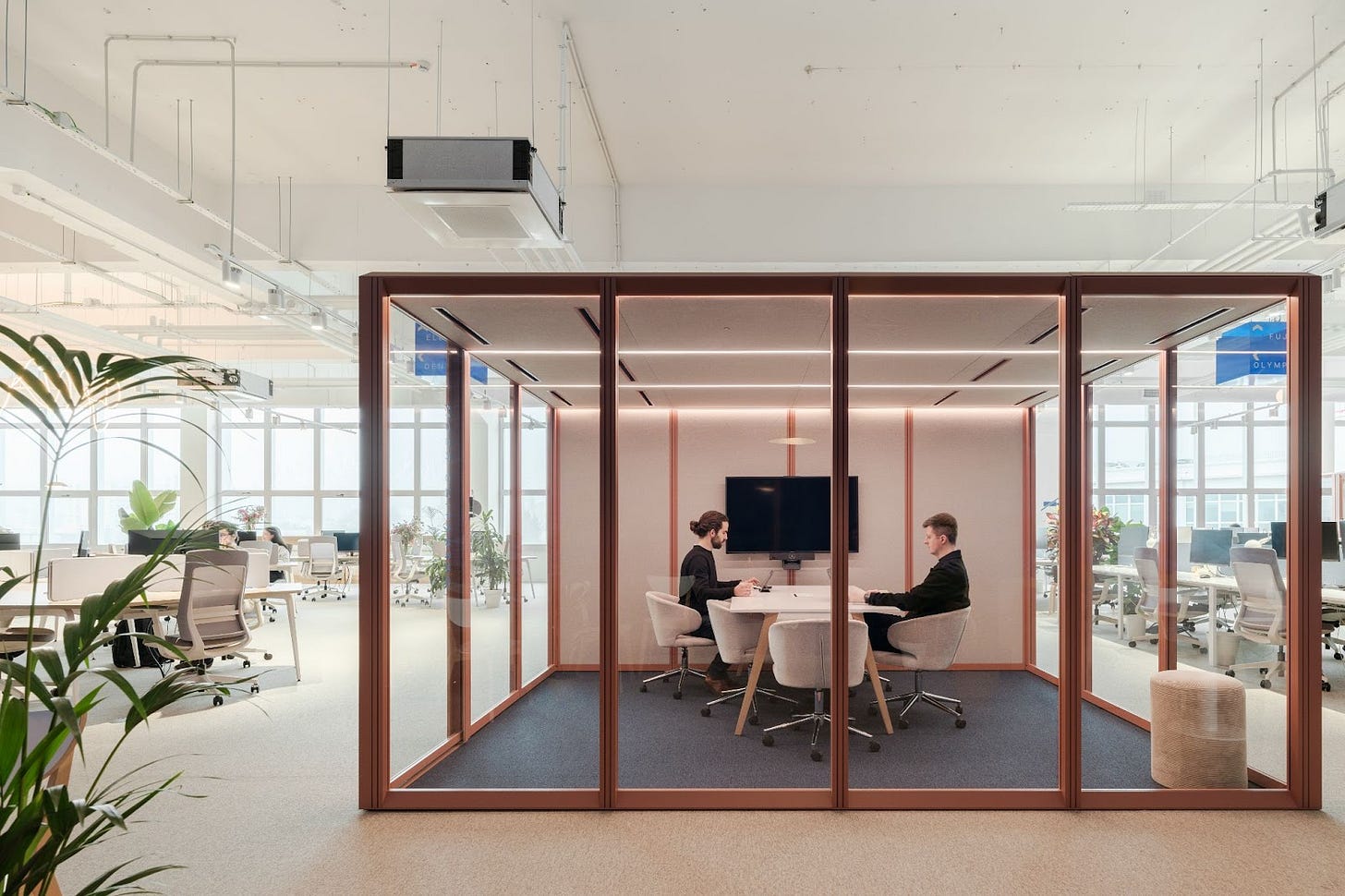The Hidden Flaws of CAT A+ Office Fit-Outs
Why a flexible approach to workspace design matches the needs of today’s workers.
When CAT A+ arrived on the scene, it disrupted the landlord–tenant model, offering a step beyond CAT A’s blank canvas, but short of a tenant-driven bespoke CAT B fit-out. A plug-and-play work environment complete with desks and pre-built offices, CAT A+ boomtime came around 2022, when it accounted for 42% of all office leasing transactions (in the City of London on landlord space of sub-10,000 sq ft space), compared to just 21% the previous year.
For tenants, the popularity of CAT A+ lies in the convenience of taking up office space immediately, without investing in expensive and time-consuming fit-outs. But despite a CAT A+ space appearing office-ready, there are a few hidden flaws that impact landlords and tenants. Let’s dive into some of those insufficiencies.
Disconnected by design
When a tenant moves into a CAT A+ office space, it’s like moving into a hotel room. Everything looks polished on the surface, but once a company starts using the space, it just doesn’t feel quite theirs. For example, the logo might be nowhere to be seen, or the colour scheme clashes with the company brand. Essentially, the company’s brand identity is lost in that environment.
Beyond aesthetics, a CAT A+ office is generally designed around assumptions of what a tenant might want rather than their actual needs. This could make the overall design appear more like a plush coworking space, overlooking the true functionality of the space.
For instance, an open-plan workspace with breakout areas might have met post-pandemic needs for more social spaces; however, 55% of employees are now less interested in coming into the office for socialisation, according to Mitie’s recent research.
The same report found that full-time UK workers spend up to 74 minutes each week trying to find a meeting room with reliable WiFi connectivity or a collaboration space, costing employers around £485.2 million across the workforce weekly in lost productivity. A mismatched office space may lead workers to feel disconnected from their company and unsure what their new workplace stands for.
Missing the mark for today’s workers
An office that feels at odds with the workplace culture can also make workers question why they’re coming into the office, impacting the 28% of UK employees who continue to work on a hybrid basis.
From their own home, workers can set the conditions of their workspace exactly how they like them. Factors such as:
Lighting: At home, workers can adjust brightness to match their circadian rhythms, while many offices often have uniform lighting conditions, leaving some workers feeling drained or distracted.
Temperature: Women generally feel the cold more than men, preferring slightly warmer environments. Fixed building systems rarely cater for this, leading to ongoing discomfort.
Acoustics: Open-plan offices without proper sound treatment cause echoes and noise spillover. What’s intended as a collaborative space can quickly become a stressful one.
Vibrations: The pitch and frequencies from devices, HVAC systems, or poorly insulated spaces can cause low-level irritation that impacts focus over time.
Workstations: The home environment lends itself to privacy. In the office, hot-desking can spark competition for preferred spots, leaving some workers without a quiet or productive space to concentrate.
As no two people have the same workplace preferences, the one-size-fits-all approach of CAT A+ space doesn’t necessarily meet the requirements of every space user.
In fact, 71% of workers say they would increase office attendance if provided with the most suitable workplace experience, indicating the importance of workplace design meeting workers’ needs.
Findings by Spaces to Places reveal that 90% of office attendance decisions were driven by three generational customer types active in the current workforce. For instance, workers aged 45+ prefer private offices and quiet zones, while the 18-35 age group prefers social spaces and event areas. As younger generations continue to enter the workforce, a flexible approach to workplace design is key.
Built for now, not for growth
A CAT A+ space is typically planned around a predetermined tenant size, generally with fixed partitions and layouts. This leaves tenants unable to scale their workspace up or down, in line with their growth plans, without making costly and disruptive modifications to the space (in 2024, the average office fit-out process took between 8-14 weeks, costing around €2,500 per sq m).
But, even if a tenant took the CAT B route and personalised their workspace in line with worker preferences, surely those needs will continue to evolve? For example, an office might host 10 people one day, and 100 the next. A business might launch a short-term project requiring extra meeting rooms, only to replace these with additional desks a few months later. A start-up might secure investment and suddenly need to double its headcount.
Knocking down and rebuilding partition walls isn’t cheap, not to mention a huge contributor to waste; Building Better Partnerships found that “a fit-out project could generate more than 5 tonnes of waste for every 100 sq m of floor space.”
Then, for landlords, there’s the issue of taking a space back to its basic requirements once a tenant has left.
Ultimately, while CAT A+ is a convenient solution for fast move-ins, the long-term impacts of a plug-and-play work environment aren’t necessarily designed for the unique and evolving needs of tenants and their workers. While CAT B fit-outs allow for personalisation, any future modifications often come with cost implications that generate waste.
Mute: Redefining flexible workspaces
So, how can landlords and tenants tackle office fit-outs to meet sustainability and financial targets?
Innovative design solutions, like Mute modular systems, allow tenants to flex within their workspace. From a phone booth to a meeting pod, to a collaboration space, or a wellbeing nook, modular systems can be reconfigured to the changing needs of the modern workplace without costly labour and materials, causing minimal disruption and waste, within a fast turnaround time.
Next week, I’ll explore the cost benefits and sustainability factors associated with modular systems and office fit-outs.
This thought leadership content is brought to you by:
Explore how Mute is leading the adaptable office architecture evolution, offering modular solutions to futureproof office investments while significantly reducing construction costs and CO₂ emissions.







